Creating Intelligent Musical Instruments
Dr Charles Martin - The Australian National University
web: charlesmartin.au mastodon: @[email protected]
Ngunnawal & Ngambri & Ngarigu Country
vision
Intelligent Musical Instruments become a normal part of musical performance and production.
why?
Assist professional musicians & composers
Engage novice musicians & students
Create new kinds of music!
making intelligent musical predictions
predicting sequences
Interacting with predictions

History
- “Experiments in Musical Intelligence” (1987)
- Neural Networks for recognising musical gestures (1991)
- LSTM RNNs for generating music (2002)
- OMax Musical Agent (2006)
- Wekinator (2009)
- Google Magenta MelodyRNN (2016)
- Magenta Studio (Ableton Plugins) (2019)
Performance data is diverse

| Music Systems | Data |
|---|---|
| Score / Notation | Symbolic Music, Image |
| Digital Instruments | MIDI |
| Recording & Production | Digital Audio |
| New Musical Interfaces | Gestural and Sensor Data |
| Show Control | Video, Audio, Lighting, Control Signals |
Interactive RNN Instrument
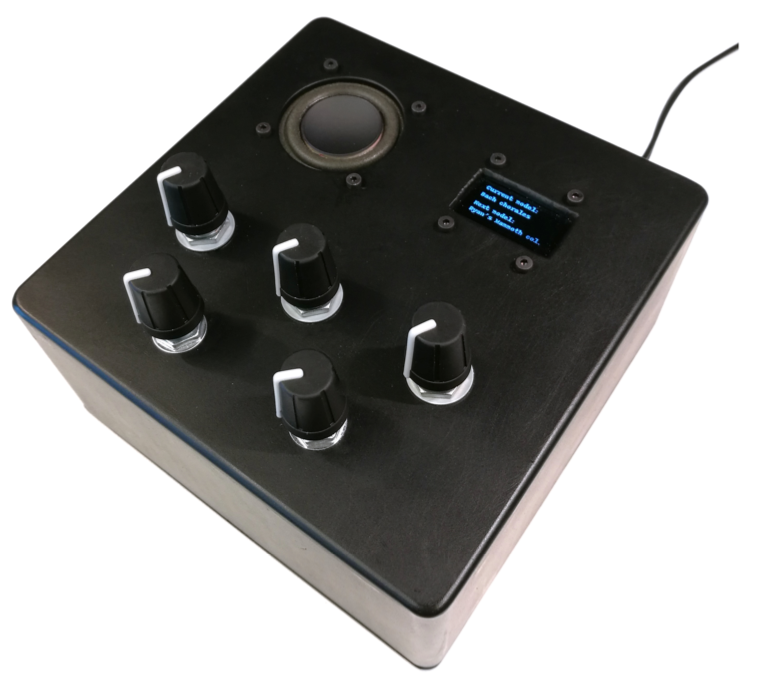
- Generates endless music with a melody RNN.
- Switchable Dataset.
- Controls for sampling “temperature”.
Physical Intelligent Instrument
GestureRNN
GestureRNN

- Predicts 1 of 9 “gestures” for three AI performers.
- Trained on labelled data from 5 hours of quartet performances.
- Actual “sounds” are chunks of each gesture played back.
RoboJam
Robojam and Microjam
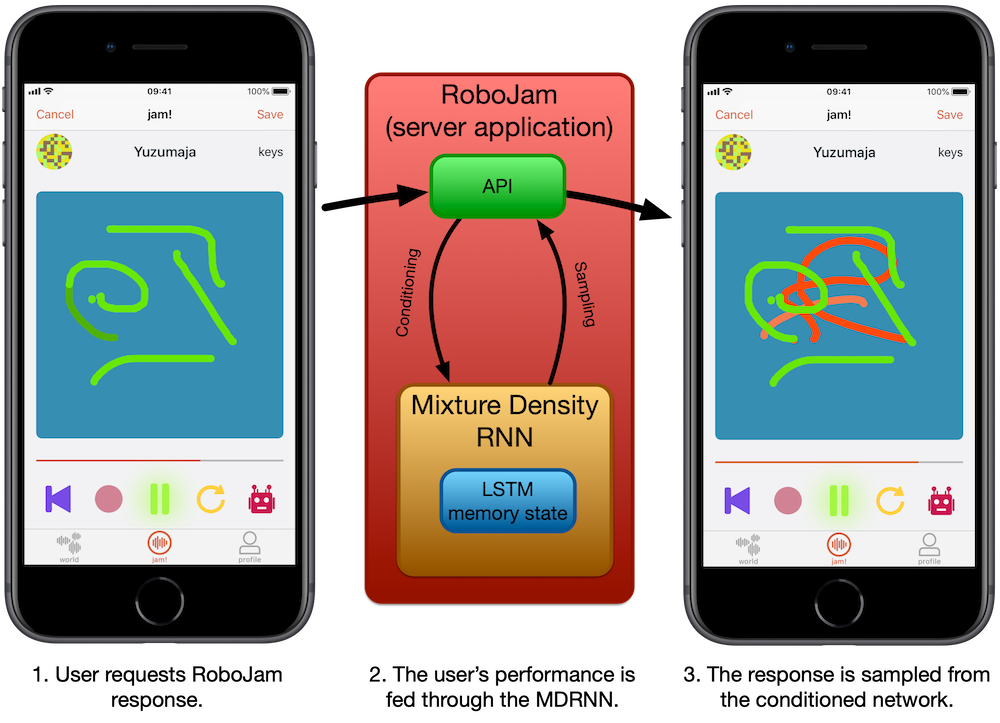
- Predicts next touch location in screen (x, y, dt).
- Trained on ~1500 5s performances.
- Produces duet “responses” to the user.
Mixture Density Network

IMPS System
IMPS System
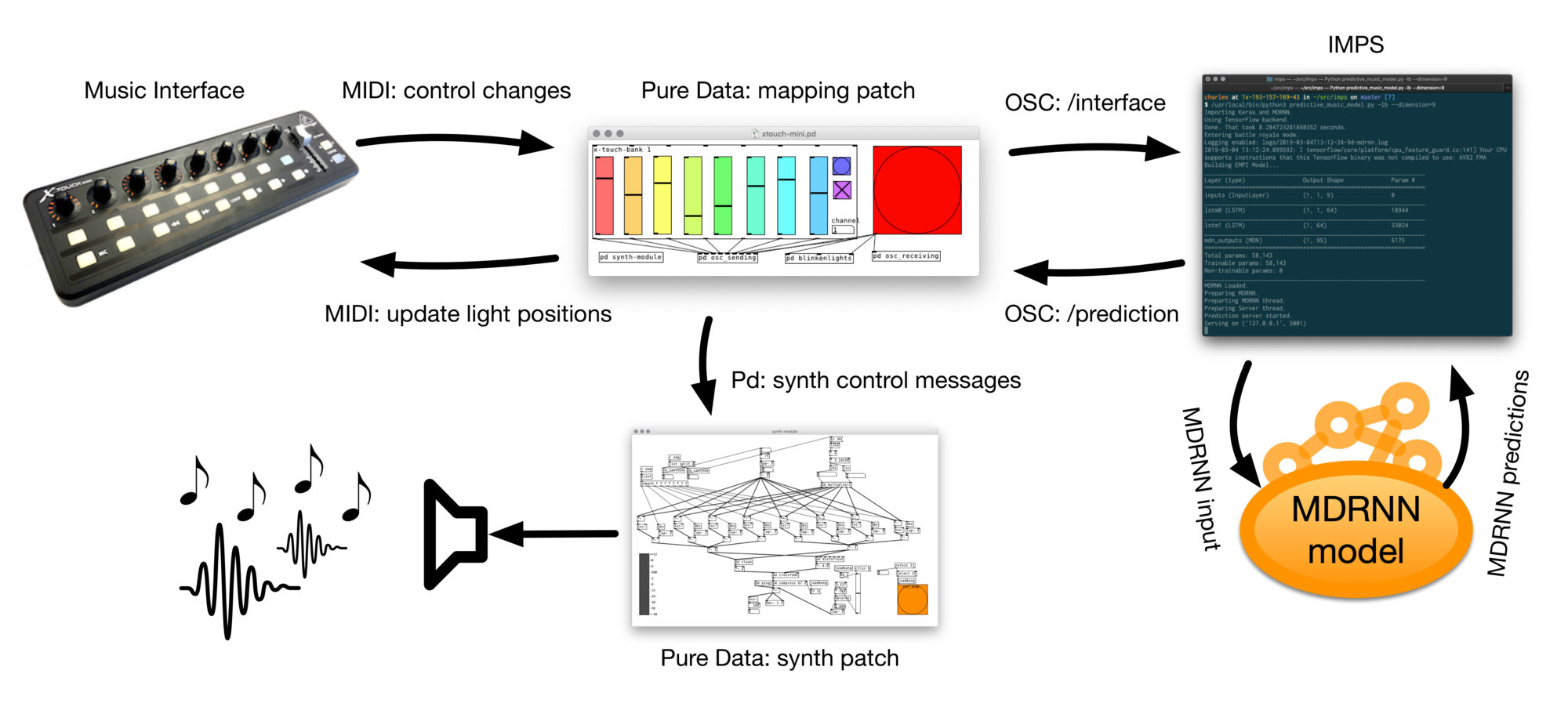
- Opinionated Neural Network for interacting with NIMES.
- Automatically collects data and trains.
- “Wekinator” for deep learning?
Three easy steps…
- Collect some data: IMPS logs interactions automatically to build up a dataset
- Train an MDRNN: IMPS includes good presets, no need to train for days/weeks
- Perform! IMPS includes three interaction modes, scope to extend in future!
Embodied Predictive Musical Instrument (EMPI)
Embodied Predictive Musical Instrument (EMPI)
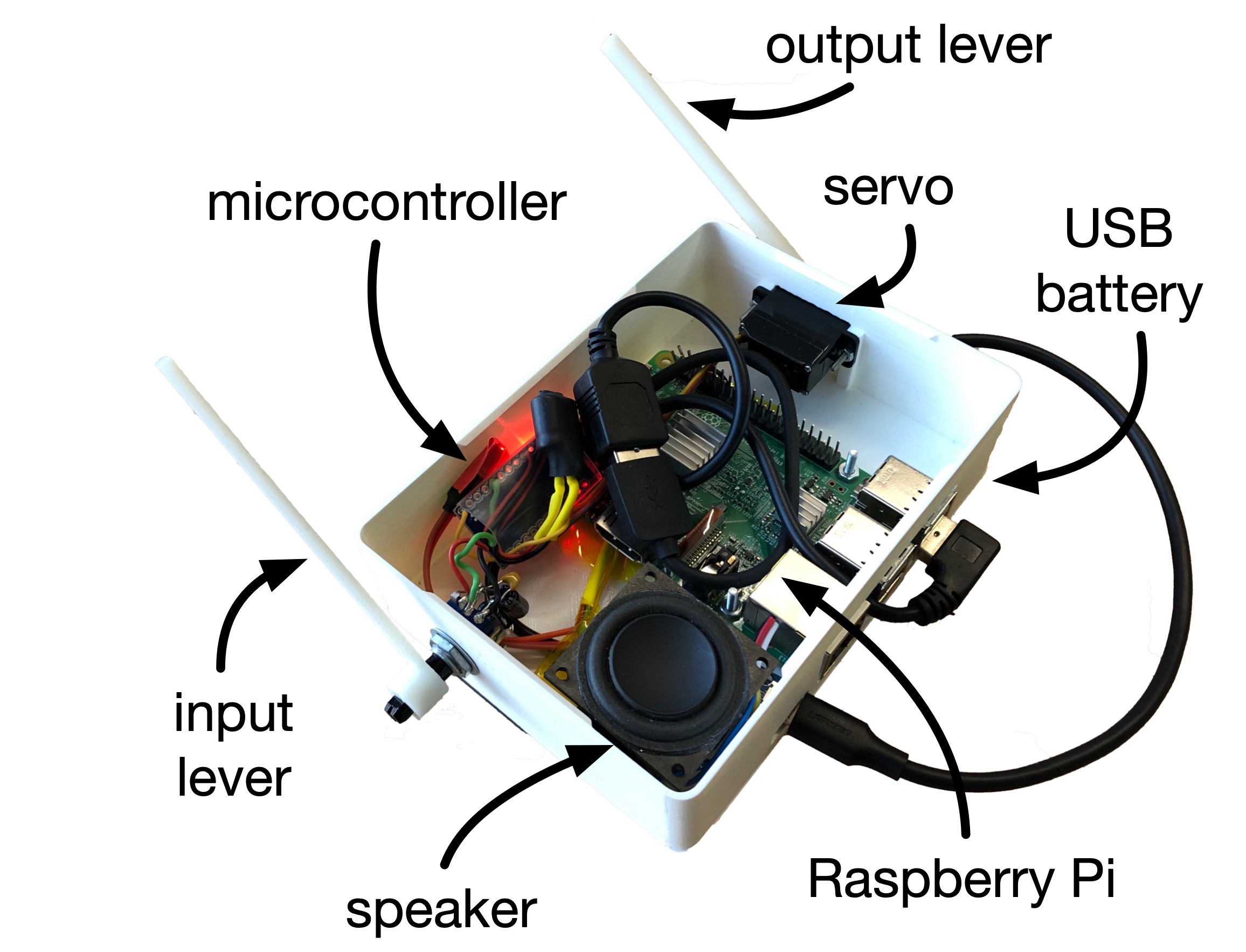
- Predicts next movement and time, represents physically.
- Experiments with interaction mappings; mainly focussed on call-response
- Weird and confusing/fun?
How to build one
- Brain: Raspberry Pi 3/4
- Interface: Arduino Pro Mini or similar
- Amplifier: Adafruit Mono 2.5W (PAM8302)
- Speaker: scavenged from monitor?
- Case: custom 3D print
- Software: https://github.com/cpmpercussion/empi
Software
- Sound: Pure Data (pd) running in headless mode
- Predictions: IMPS (running on RPi)
- Interface to MCU: MIDI over USB
Software starts on boot on the RPi, can configure over a network.
Training Data

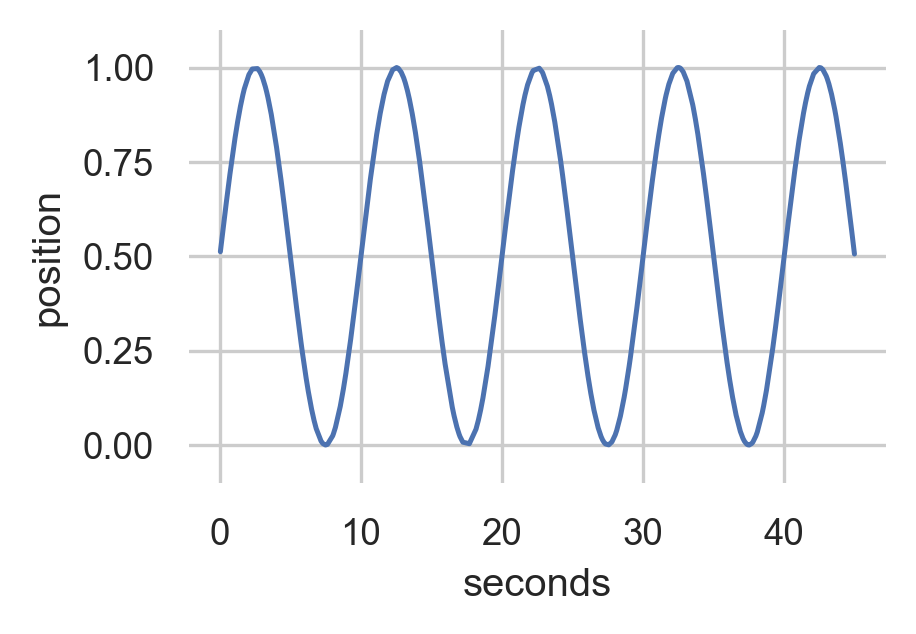
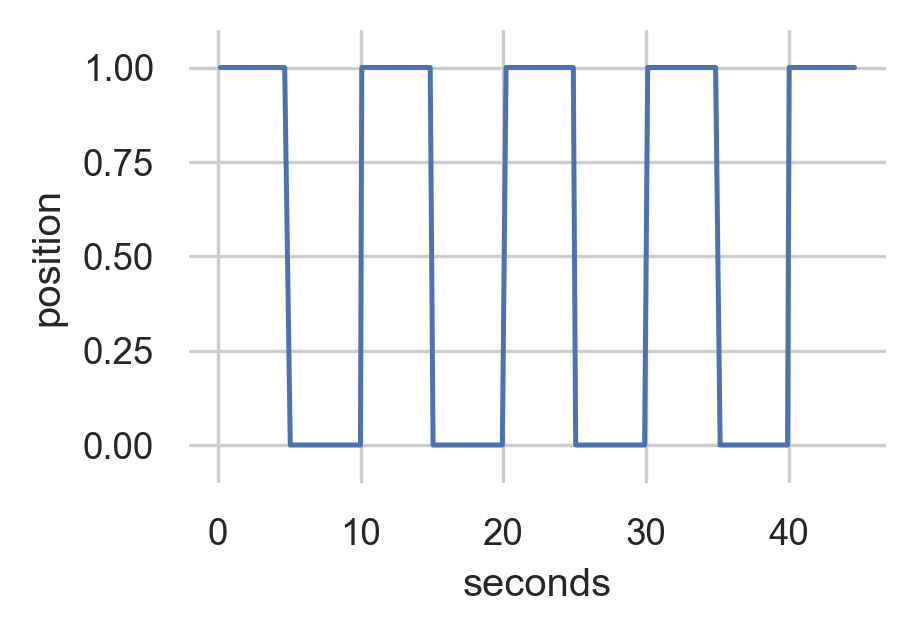
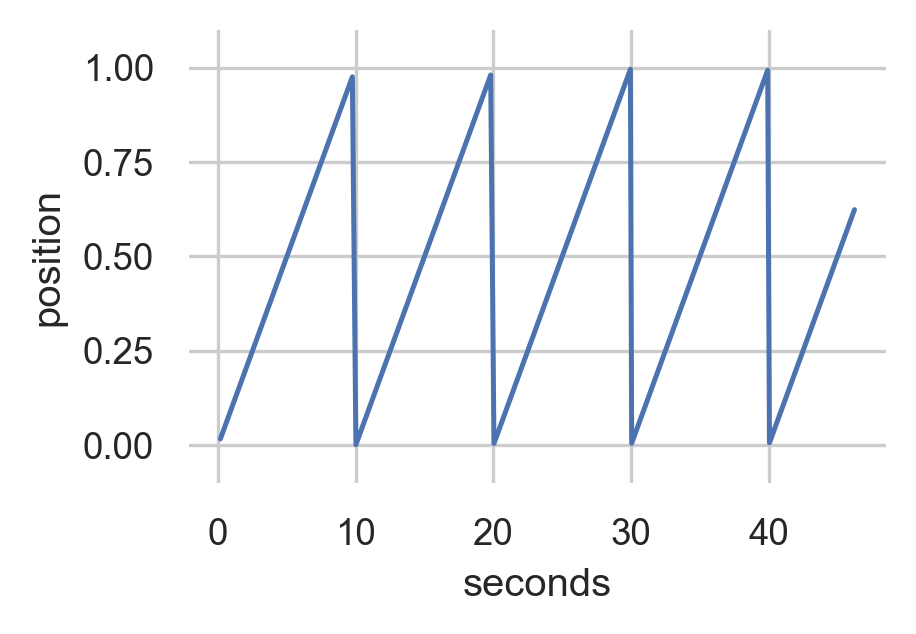
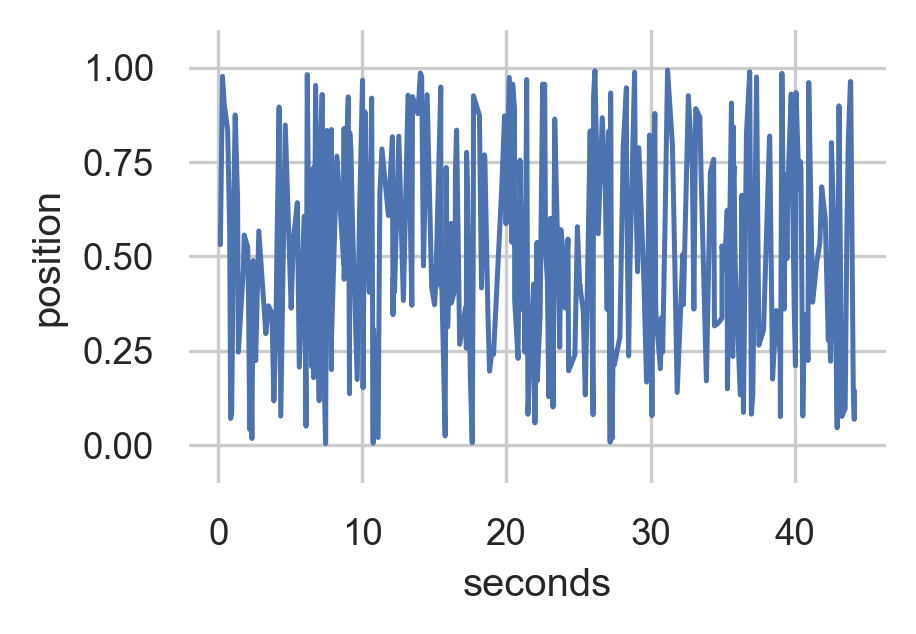
Generated Data



Using Predictions to Make Music
Emulate or enhance ensemble experience
Engage in call-and-response improvisation
Model a performer’s personal style
Modify/improve performance actions in place
Evaluating Predictive Instruments?
Does the ML model make good predictions?
Is this computationally practical?
Is this useful to musicians?
Try out IMPS or EMPI!
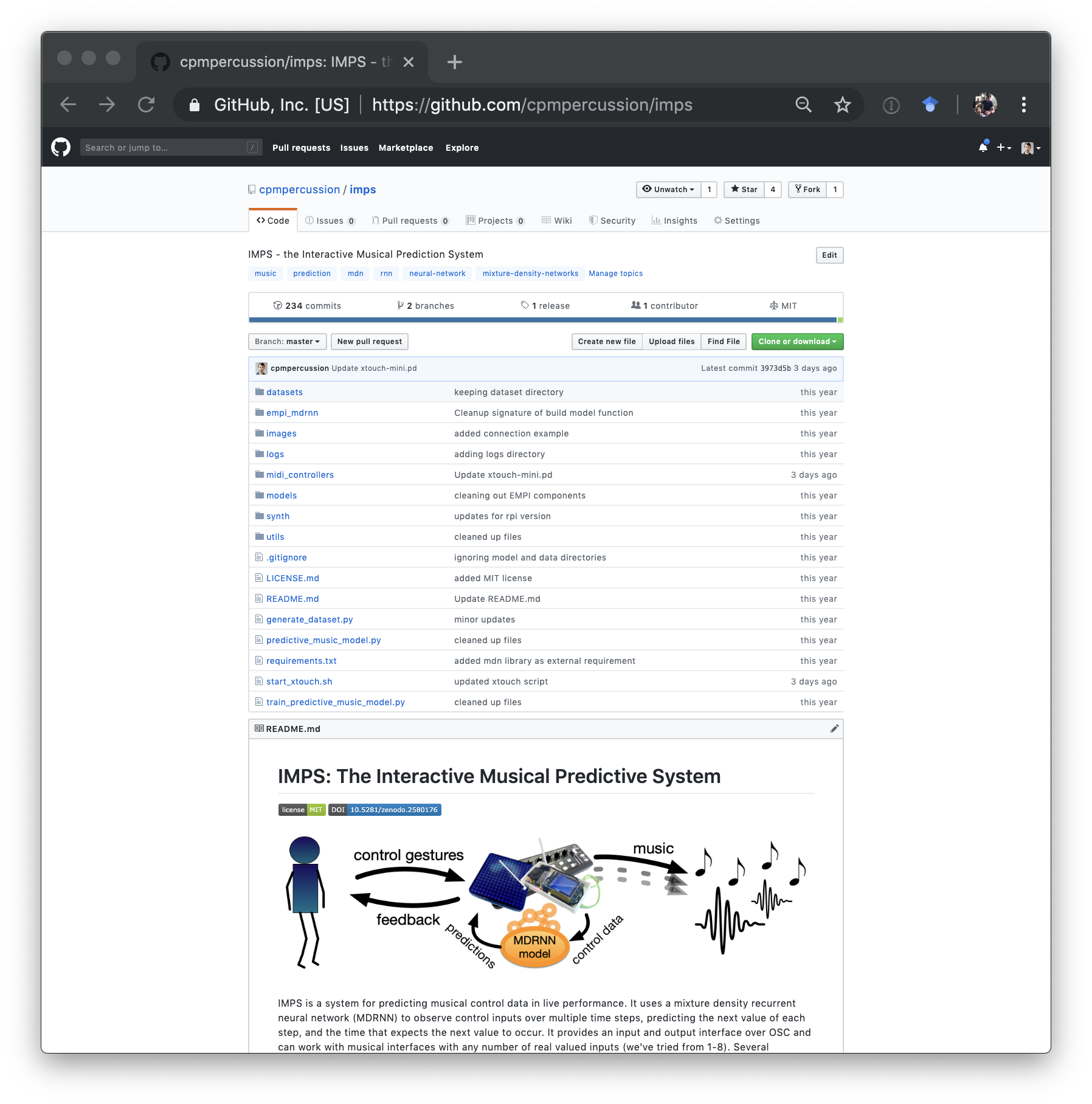
- Available on GitHub
- creativeprediction.xyz/imps
- Try with your digital musical instruments!
- Hack if you want!
- Add an issue with problems/results!
- Twitter/Github: @cpmpercussion
- Homepage: charlesmartin.com.au